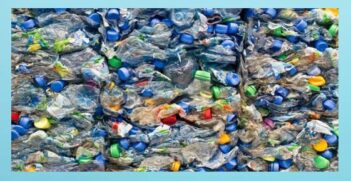Are “green” plastics about to get greener?
The short-answer is “yes,” but not through recycling alone. (More on that later.) Plastic injection molding companies in Illinois and elsewhere are experimenting with “bio-assimilation,” a process by which plastics which are not recycled can safely breakdown and disappear over a period of 6-42 months in landfills, compost heaps, bodies of water or even just laying on the ground, should, God-forbid, they inadvertently end up in those last two environments.
But isn’t recycling plastics “greener” than just letting them disintegrate via bio-assimilation in some landfill? Yes, but unfortunately a sizeable majority of plastic is never recycled for economic reasons. Simply put, plastic recycling is an expensive and complex process that often makes the finished product — recycled plastic — more expensive than brand new “virgin” plastic.
Enter bio-assimilation. This elegant solution involves an additive which is mixed in with the plastic resin prior to the molding process. Although these treated plastic products perform just as well as conventional plastics during their shelf-life, something very interesting happens when they reach the landfill or other final resting place in Nature: their molecular structure breaks down, exposing their carbon structure to micro-organisms in the soil or water. These micro-organisms literally eat the plastic, leaving zero — that’s right — ZERO microplastic filaments! They consume the plastic the way a hungry teenager consumes a cheeseburger — quickly and completely. Depending on the additive, complete breakdown occurs anywhere from 6-42 months, depending on environmental conditions.
Compare that to conventional plastics which don’t even begin to degrade for 20-30 years. Even then, conventional plastics degrade less than one-half of one percent after 100 years!
It gets better: these bio-assimilated products are 100% recyclable! If not exposed to soil or water, they behave identically to regular plastics when recycled because the additive includes “stabilizers” which prevent pre-mature breakdown in the absence of micro-organisms.
More can be said about this exciting new technology, and will be, in the next blog post!
